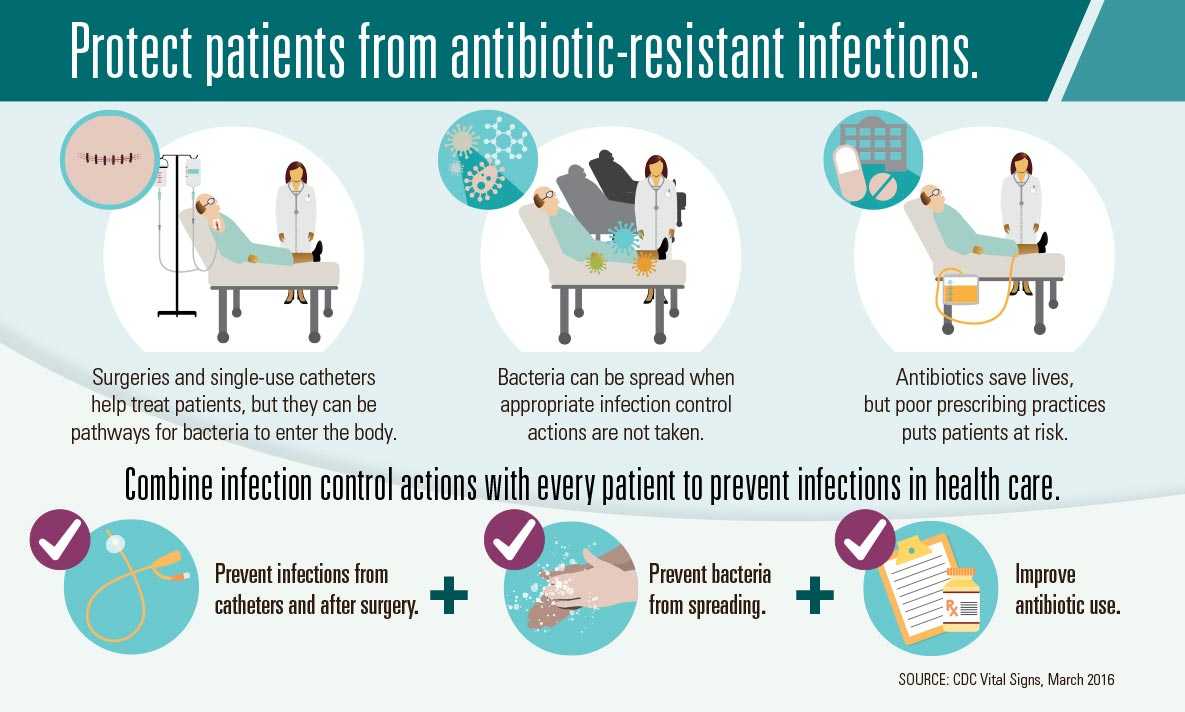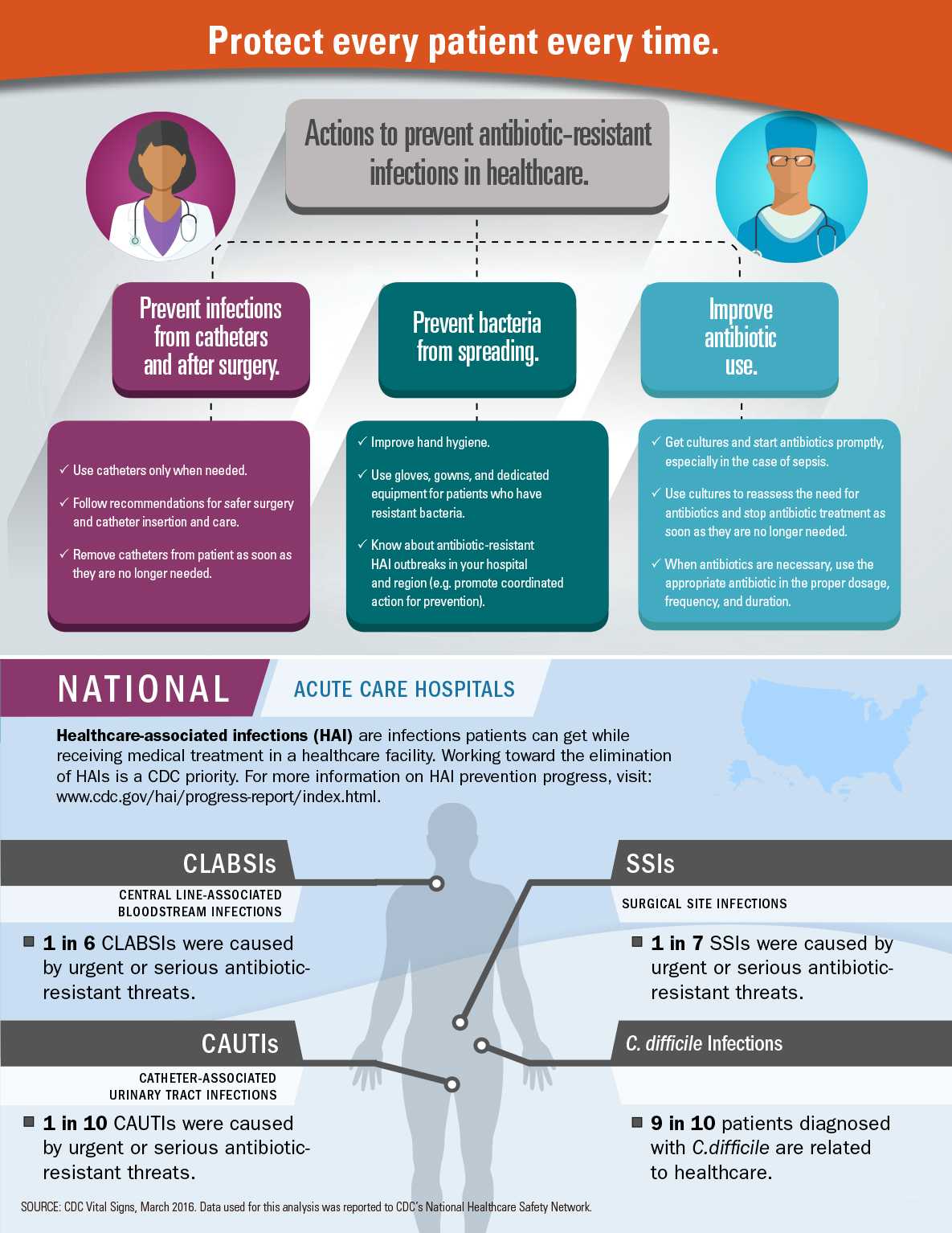Making Health Care Safer
Protect patients from antibiotic resistance
Protect patients from antibiotic-resistant infections.
- Surgeries and single-use catheters help treat patients, but they can be pathways for bacteria to enter the body.
- Bacteria can be spread when appropriate infection control actions are not taken.
- Antibiotics save lives, but poor prescribing practices puts patients at risk.
Combine infection control actions with every patient to prevent infections in healthcare.
- Preventing infections from catheters and after surgery
- Preventing bacteria from spreading
- Improving antibiotic use.
SOURCE: CDC Vital Signs, March 2016.
Protect every patient every time.
Actions to prevent antibiotic-resistant infections in healthcare.
Prevent infections from catheters and after surgery.
- Use catheters only when needed.
- Follow recommendations for safer surgery and catheter insertion and care.
- Remove catheters from patient as soon as they are no longer needed.
Prevent bacteria from spreading.
- Improve hand hygiene.
- Use gloves, gowns, and dedicated equipment for patients who have resistant bacteria.
- Know about antibiotic-resistant HAI outbreaks in your hospital and region (e.g. promote coordinated action for prevention).
Improve antibiotic use.
- Get cultures and start antibiotics promptly, especially in the case of sepsis.
- Use cultures to reassess the need for antibiotics and stop antibiotic treatment as soon as they are no longer needed.
- When antibiotics are necessary, use the appropriate antibiotic in the proper dosage, frequency, and duration.
National Acute Care Hospitals
Healthcare-associated infections (HAI) are infections patients can get while receiving medical treatment in a healthcare facility. Working toward the elimination of HAIs is a CDC priority. For more information on HAI prevention progress, visit: www.cdc.gov/hai/progress-report/index.html.
CLABSIs
CENTRAL LINE-ASSOCIATED BLOODSTREAM INFECTIONS
- 1 in 6 CLABSIs were caused by urgent or serious antibiotic-resistant threats.
CAUTIs
CATHETER-ASSOCIATED URINARY TRACT INFECTIONS
- 1 in 10 CAUTIs were caused by urgent or serious antibiotic-resistant threats.
SSIs
SURGICAL SITE INFECTIONS
- 1 in 7 SSIs were caused by urgent or serious antibiotic-resistant threats.
C. difficile infections
- 9 in 10 patients diagnosed with C. difficile are related to healthcare.
SOURCE: CDC Vital Signs, March 2016. Data used for this analysis was reported to CDC’s National Healthcare Safety Network.
- Page last reviewed: March 3, 2016
- Page last updated: March 3, 2016
- Content source:
Error processing SSI file


 ShareCompartir
ShareCompartir

